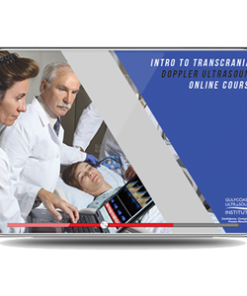VIDEO MEDICAL
VIDEO MEDICAL
VIDEO MEDICAL
VIDEO MEDICAL
VIDEO MEDICAL
VIDEO MEDICAL
VIDEO MEDICAL
VIDEO MEDICAL
VIDEO MEDICAL
VIDEO MEDICAL
VIDEO MEDICAL
VIDEO MEDICAL
VIDEO MEDICAL
VIDEO MEDICAL
VIDEO MEDICAL
VIDEO MEDICAL
VIDEO MEDICAL
VIDEO MEDICAL
VIDEO MEDICAL
VIDEO MEDICAL
Introduction
Telemedicine is revolutionizing healthcare by providing patients with the convenience of video medical consultations. This innovative technology allows patients to access medical care from the comfort of their own home, without having to travel to a doctor’s office. Video medical consultations offer numerous benefits, including improved access to care, reduced wait times, and increased patient satisfaction. Additionally, telemedicine can help reduce healthcare costs and improve overall health outcomes. In this article, we will explore the many benefits of video medical consultations and how telemedicine is transforming healthcare.
Overview of Telemedicine and its Benefits
Telemedicine is a rapidly growing field of healthcare that utilizes technology to provide medical services remotely. It is a form of virtual care that allows patients to access medical advice, diagnosis, and treatment from the comfort of their own home or other remote locations. Telemedicine has become increasingly popular in recent years due to its convenience and cost-effectiveness.
Telemedicine can be used for a variety of medical services, including primary care, mental health, and specialty care. Patients can connect with their healthcare provider via video conferencing, telephone, or even text messaging. This allows them to receive medical advice and treatment without having to leave their home or travel to a doctor’s office.
The benefits of telemedicine are numerous. For starters, it eliminates the need for patients to take time off work or school to visit a doctor’s office. It also reduces wait times for appointments, as patients can often get same-day appointments with their healthcare provider. Additionally, telemedicine can reduce costs associated with travel and parking fees.
Telemedicine also provides greater access to healthcare for those who live in rural areas or have limited mobility. By eliminating the need to travel long distances to see a doctor, telemedicine makes healthcare more accessible to those who may not otherwise have access.
Finally, telemedicine can improve patient outcomes by providing timely access to medical advice and treatment. This can help prevent minor illnesses from becoming more serious and reduce the need for costly hospital visits.
Overall, telemedicine is an invaluable tool for improving access to healthcare and providing quality care to patients. It is a convenient, cost-effective way for patients to receive medical advice and treatment without having to leave their home. As technology continues to advance, telemedicine will only become more prevalent and beneficial to both patients and healthcare providers.
How Video Medical Consultations are Improving Access to Healthcare
Video medical consultations are revolutionizing the way healthcare is accessed and delivered. By allowing patients to connect with their doctors remotely, video medical consultations are improving access to healthcare for those who may not have been able to receive it otherwise.
Video medical consultations provide a convenient and cost-effective way for patients to receive medical care without having to leave their homes. This can be especially beneficial for those who live in rural areas or have limited mobility due to age or disability. Video medical consultations also allow patients to connect with specialists who may not be available in their local area.
Video medical consultations are also helping to reduce wait times for appointments. By eliminating the need to travel to a doctor’s office, patients can get the care they need more quickly. This can be especially helpful for those with chronic conditions who require frequent follow-up visits.
Video medical consultations are also helping to improve communication between patients and their doctors. By providing a visual connection, doctors can better assess a patient’s condition and provide more accurate diagnoses. Additionally, video medical consultations can help to reduce miscommunication between patients and their doctors by providing a more direct line of communication.
Finally, video medical consultations are helping to reduce healthcare costs. By eliminating the need for in-person visits, patients can save money on transportation and other associated costs. Additionally, video medical consultations can help to reduce the amount of time doctors spend on administrative tasks, freeing up more time for patient care.
Overall, video medical consultations are making healthcare more accessible and affordable for patients around the world. By providing a convenient and cost-effective way to receive medical care, video medical consultations are helping to improve access to healthcare for those who may not have been able to receive it otherwise.
The Impact of Telemedicine on Patient Outcomes
Telemedicine is a rapidly growing field of healthcare that has the potential to revolutionize patient outcomes. It is a form of medical care that uses technology to provide remote access to health services, such as diagnosis and treatment, without the need for an in-person visit. Telemedicine can be used to diagnose and treat a wide range of conditions, from minor illnesses to chronic diseases.
The impact of telemedicine on patient outcomes is significant. Studies have shown that telemedicine can improve access to care, reduce wait times, and increase patient satisfaction. In addition, telemedicine can help reduce costs associated with traditional in-person visits, such as travel expenses and lost wages due to missed work. Furthermore, telemedicine can improve the quality of care by providing more timely access to specialists and allowing for more comprehensive follow-up care.
Telemedicine can also improve patient outcomes by providing better communication between patients and their healthcare providers. Through telemedicine, patients can easily communicate with their doctors and receive timely feedback on their condition. This improved communication can lead to better adherence to treatment plans and better overall health outcomes.
Finally, telemedicine can help reduce hospital readmissions and emergency room visits. By providing timely access to care, telemedicine can help prevent the need for costly and time-consuming hospital visits. Additionally, telemedicine can help reduce the risk of complications from chronic conditions by providing timely follow-up care.
Overall, telemedicine has the potential to revolutionize patient outcomes. By improving access to care, reducing costs, and improving communication between patients and their healthcare providers, telemedicine can help improve the quality of care and lead to better health outcomes.
Cost Savings of Telemedicine for Patients and Providers
Telemedicine is a rapidly growing field of healthcare that has the potential to revolutionize the way patients and providers interact. Telemedicine is the use of technology to provide medical care remotely, allowing patients to access care from anywhere in the world. This technology has been used for decades, but its popularity has grown exponentially in recent years due to advances in technology and the increasing demand for convenient and cost-effective healthcare.
For patients, telemedicine offers a number of cost savings. By eliminating the need to travel to a doctor’s office or hospital, patients can save money on transportation costs. Additionally, telemedicine visits are often shorter than traditional office visits, meaning patients can save time as well as money. Furthermore, many telemedicine services offer discounted rates for uninsured patients, making it easier for those without insurance to access quality healthcare.
Providers also benefit from the cost savings associated with telemedicine. By eliminating the need for physical office space, providers can save money on rent and other overhead costs. Additionally, telemedicine visits require less staff time, which can result in significant savings for providers. Finally, telemedicine can help providers reach more patients, resulting in increased revenue.
Overall, telemedicine offers a number of cost savings for both patients and providers. By eliminating the need for physical office space and reducing the amount of time required for each visit, telemedicine can help reduce healthcare costs while still providing quality care. As telemedicine continues to grow in popularity, it is likely that these cost savings will become even more pronounced.
Challenges and Opportunities of Telemedicine in Healthcare Delivery
Telemedicine is a rapidly growing field in healthcare delivery, offering both challenges and opportunities. Telemedicine is the use of technology to provide medical care remotely, allowing patients to access care from anywhere with an internet connection. This technology has the potential to revolutionize healthcare delivery, providing more efficient and cost-effective care for patients. However, there are several challenges that must be addressed before telemedicine can reach its full potential.
One of the biggest challenges facing telemedicine is the lack of standardization. Different providers have different systems and protocols for delivering care, making it difficult for providers to communicate effectively with each other. Additionally, many providers are not familiar with the technology required for telemedicine, making it difficult for them to adopt the technology.
Another challenge is the lack of reimbursement for telemedicine services. Many insurance companies do not cover telemedicine services, making it difficult for providers to offer these services to their patients. Additionally, many providers are reluctant to invest in the technology required for telemedicine due to the uncertain reimbursement landscape.
Despite these challenges, there are also many opportunities for telemedicine to improve healthcare delivery. Telemedicine can provide more convenient access to care for patients, especially those in rural or underserved areas. It can also reduce wait times and improve patient outcomes by allowing providers to diagnose and treat patients more quickly. Additionally, telemedicine can reduce costs by eliminating the need for travel and reducing the amount of time spent in the office.
Overall, telemedicine has the potential to revolutionize healthcare delivery. However, there are still many challenges that must be addressed before telemedicine can reach its full potential. With the right policies and investments, telemedicine can become an integral part of healthcare delivery, providing more efficient and cost-effective care for patients.
Conclusion
Telemedicine is revolutionizing healthcare by providing patients with the convenience of video medical consultations. This technology offers a variety of benefits, including improved access to care, increased patient satisfaction, and cost savings for both patients and providers. Telemedicine also allows for more efficient communication between providers and patients, allowing for better diagnosis and treatment. With its many advantages, telemedicine is quickly becoming an integral part of modern healthcare






























